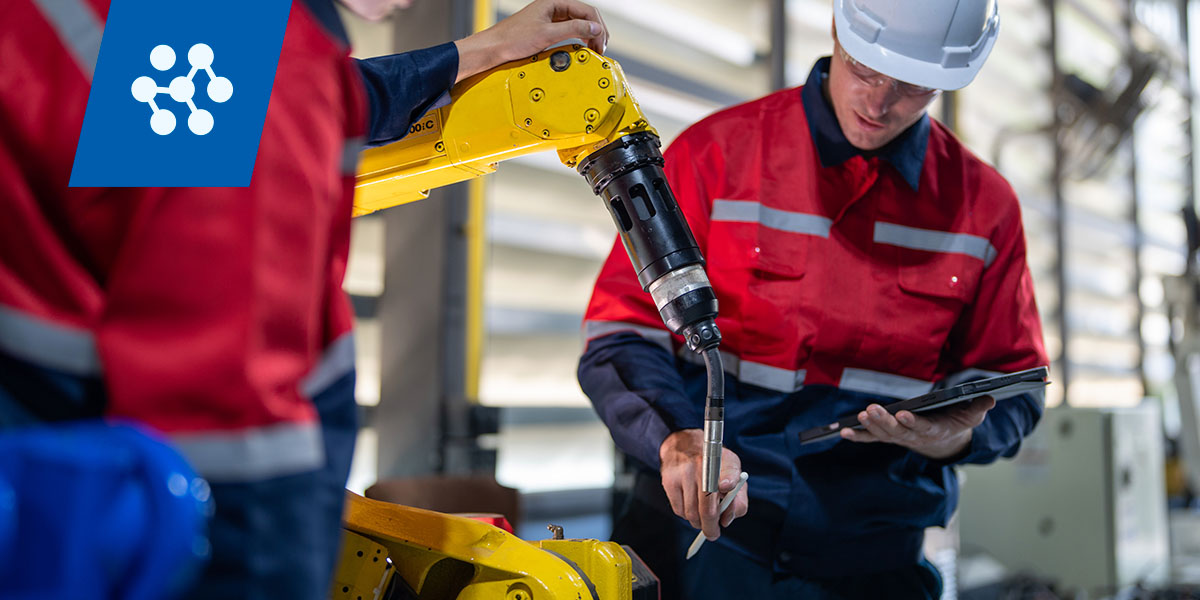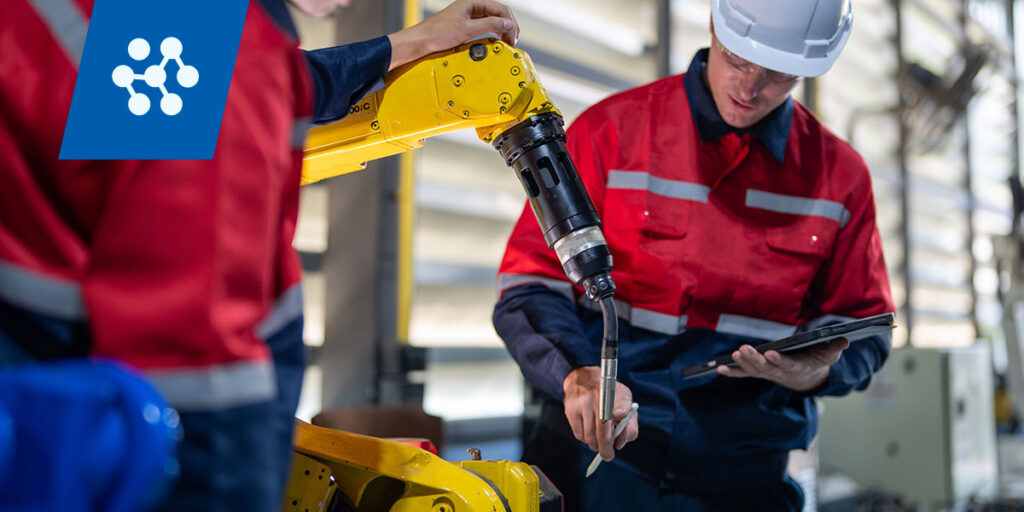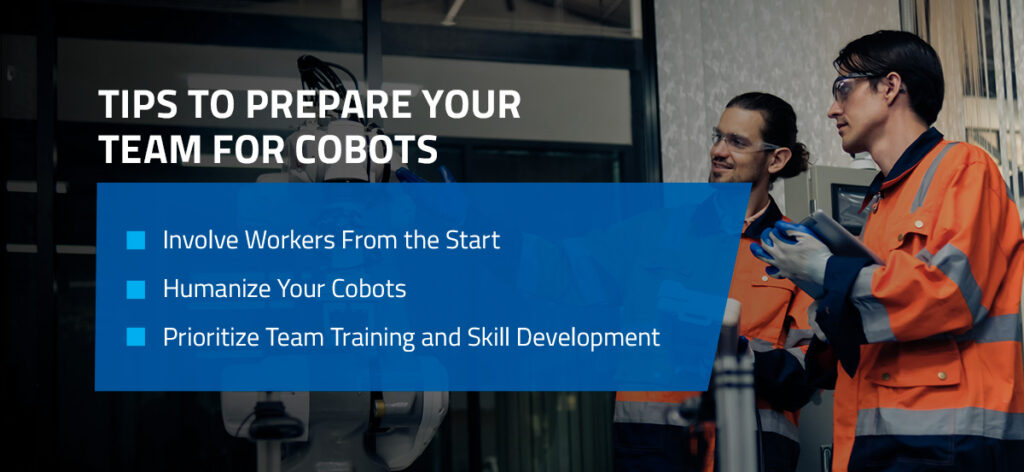

Collaborative robots, or cobots, are becoming essential additions to production lines, including metal fabrication processes in manufacturing. However, preparing your team to welcome new equipment to do their jobs is challenging — especially when the new equipment can complete many of their everyday job tasks with ease.
Building understanding and training your employees are the best ways to highlight the advantages of cobots and automation. Learn more about cobots and how to properly integrate them into your workplace below.
Cobots are a type of automated robot designed to work safely alongside human workers. They’re made to supplement rather than replace human employees. Artificial intelligence, robot process automation and machine learning are the building blocks that make these machines effective and easy to operate.
Cobots have many applications in various industries. Their primary role is helping human workers automate repetitive and time-consuming tasks while reducing risk and maintaining consistency. Cobots prove especially useful in areas where robot arms placed behind barriers prove inadequate.
Here are a few examples:
Cobots stand out for their ability to work side-by-side with human workers. They can quickly halt operations to prevent accidents by utilizing advanced sensors to detect when a person is too close. This capability allows for a smooth collaboration of robotic efficiency and human expertise.
These are a few key benefits of using cobots in manufacturing:
Introducing a cobot into your manufacturing operation is a relatively simple process, but preparing your workforce for the change can take time and effort. You must highlight the machine’s benefits and train your team to operate and maintain it effectively. Here are some tips to help you ease the process:

Be transparent with your employees about your plans to automate sections of your production line. Get your workers’ input on where they think redundancies and bottlenecks exist. Be sure to highlight the benefits of cobots and how they can provide many productivity and safety benefits on the line.
Involve your workers in the cobot maintenance process and show them their role in the automation procedure. Reassure them that the cobot isn’t replacing them but rather helping to create a safer and more efficient workplace. Investing in cobots shows your employees that you value their efforts and are serious about improving their work environment.
Another way to improve your team’s acceptance of your cobot is to name it. Humans commonly name inanimate objects like boats, cars and computers, so why not a robot?
Naming your cobot gives it a personality, a concept called “anthropomorphism.” It improves the chances of your workers caring for it, especially when they decide on the name. Ultimately, a cobot with a name becomes less of an appliance or tool and more of a part of the team. It’s easier for your workers to accept its presence when they humanize it.
While these machines are designed for safety and efficiency, the workers overseeing them still need the appropriate knowledge to ensure cobot safety. Provide your workers with sufficient cobot training on how to work effectively with cobots. This coaching will teach them how to troubleshoot common errors, operate the cobot at a basic level, and program it for different tasks, such as welding.
Here are some of the key cobot skills your employees should have:
The right support and training make working with cobots smoother. Operating with the cobots may also indirectly teach your team more valuable skills, improving their productivity and efficiency. Altogether, ongoing learning should be a fundamental aspect of your workplace to keep your team sharp and help them become adaptable to changes.

Understanding cobots and the benefits they offer makes cobot integration much easier in your workplace. At Meritus Gas Partners, we partner with numerous suppliers of cobot solutions, giving you access to an extensive selection of the tools you need to complete welding and other processes.
We’re committed to our customers, offering the necessary support and services to help you maintain a safe and efficient production line. Contact us today or find a location near you, and take the next step toward creating a collaborative manufacturing environment with cobots.